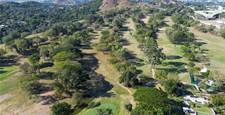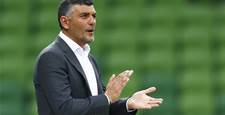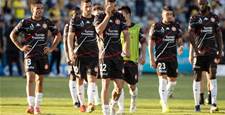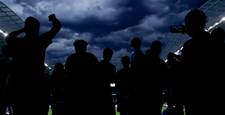Remember when, at the launch for the first ever A-League campaign at a Sydney press conference in August 2005, FFA chairman Frank Lowy implored fans of 'old soccer' to give the new game a chance?
Since then we have seen the sort of changes that would have hardly been imaginable.
The Socceroos made the last 16 in the World Cup and now routinely pull big crowds – irrespective of whether Kewell and Viduka are in the team. The A-League has drawn the crowds too – Melbourne Victory have twice pulled over 50,000 fans. Players like Dwight Yorke and Juninho have had spells in the A-League and Adelaide have become the first Australian side to reach the last eight of the ACL.
What, then, might we expect in the next three years? Will the pace of change be as rapid? Possibly. All we can say with certainty is that the future is uncertain, but here’s an informed (and sometimes tongue-in-cheek) peek at the crystal ball.
It’s October 2011 and the 12-team A-League is nine rounds into its 33 game season, with perennial powerhouses Melbourne and Sydney upstaged at the top of the table by big spending new boys Gold Coast, now under the full time control of Paul Okon, who took charge in the club’s second season when spin-meister Miron Bleiberg moved upstairs to combine the roles of Technical Director and Public Relations Chief.
Okon has been able to lure several internationals to Surfers Paradise, and the likes of Harry Kewell, Brett Emerton and Mile Sterjovski bring both quality and experience to the side.
Crowds all around the league – even in difficult markets like Perth, Sydney and Wellington – are now averaging 20,000.
The Socceroos, coached by the canny Pim Verbeek, went one better than in Germany and made the last eight in South Africa 2010, where they went out in a penalty shootout to African champions Ivory Coast.
Australia had earlier in the year justified their status as short priced favourites and won the Asian Cup. They will defend the title at home in 2015, having won the hosting rights in 2009.
While Gold Coast and the second Melbourne team (added in 2010-11) have immediately proved themselves competitive, Fury have taken time to get to grips with the demands of the A-League.
Formidable at home, the Queenslanders don’t travel too well – particularly in the early season games down south where they struggle in single digit temperatures. New coach Claudio “Tinkerman’’ Ranieri now admits he will only achieve success if he is prepared to settle on a line up and not change it every game.
John Kosmina is still in charge at Sydney, while the Vidmar brothers, Aurelio and Tony, are the first coaching partnership in the competition at Adelaide, where the Aloisi brothers are assistants.
Melbourne’s Mr Football, Kevin Muscat, has replaced Ernie Merrick at Victory and is imbuing the club with the sort of ruthlessness he so often displayed in his decorated playing career.
The FFA isn’t satisfied with the success though. More A-League expansion is planned for 2014 when there will be two new clubs – one in Canberra and the other in Tasmania.
When the FFA announced an expansion franchise would split its games between Hobart and Launceston, the Tassie government and entire corporate sector embraced the initiative, and football has now replaced Aussie Rules as the timetabled game in Tasmanian schools.
Meanwhile, the West Sydney Hucksters continue to languish at the foot of the AFL ladder requiring financial support and concessional draft choices.
Free ticket giveaways rarely lift their average gates above 9,000, made up of mainly expatriate Victorians travelling out from Sydney’s beachside suburbs.
This column first appeared in the November edition of Australian FourFourTwo
Since then we have seen the sort of changes that would have hardly been imaginable.
The Socceroos made the last 16 in the World Cup and now routinely pull big crowds – irrespective of whether Kewell and Viduka are in the team. The A-League has drawn the crowds too – Melbourne Victory have twice pulled over 50,000 fans. Players like Dwight Yorke and Juninho have had spells in the A-League and Adelaide have become the first Australian side to reach the last eight of the ACL.
What, then, might we expect in the next three years? Will the pace of change be as rapid? Possibly. All we can say with certainty is that the future is uncertain, but here’s an informed (and sometimes tongue-in-cheek) peek at the crystal ball.
It’s October 2011 and the 12-team A-League is nine rounds into its 33 game season, with perennial powerhouses Melbourne and Sydney upstaged at the top of the table by big spending new boys Gold Coast, now under the full time control of Paul Okon, who took charge in the club’s second season when spin-meister Miron Bleiberg moved upstairs to combine the roles of Technical Director and Public Relations Chief.
Okon has been able to lure several internationals to Surfers Paradise, and the likes of Harry Kewell, Brett Emerton and Mile Sterjovski bring both quality and experience to the side.
Crowds all around the league – even in difficult markets like Perth, Sydney and Wellington – are now averaging 20,000.
The Socceroos, coached by the canny Pim Verbeek, went one better than in Germany and made the last eight in South Africa 2010, where they went out in a penalty shootout to African champions Ivory Coast.
Australia had earlier in the year justified their status as short priced favourites and won the Asian Cup. They will defend the title at home in 2015, having won the hosting rights in 2009.
While Gold Coast and the second Melbourne team (added in 2010-11) have immediately proved themselves competitive, Fury have taken time to get to grips with the demands of the A-League.
Formidable at home, the Queenslanders don’t travel too well – particularly in the early season games down south where they struggle in single digit temperatures. New coach Claudio “Tinkerman’’ Ranieri now admits he will only achieve success if he is prepared to settle on a line up and not change it every game.
John Kosmina is still in charge at Sydney, while the Vidmar brothers, Aurelio and Tony, are the first coaching partnership in the competition at Adelaide, where the Aloisi brothers are assistants.
Melbourne’s Mr Football, Kevin Muscat, has replaced Ernie Merrick at Victory and is imbuing the club with the sort of ruthlessness he so often displayed in his decorated playing career.
The FFA isn’t satisfied with the success though. More A-League expansion is planned for 2014 when there will be two new clubs – one in Canberra and the other in Tasmania.
When the FFA announced an expansion franchise would split its games between Hobart and Launceston, the Tassie government and entire corporate sector embraced the initiative, and football has now replaced Aussie Rules as the timetabled game in Tasmanian schools.
Meanwhile, the West Sydney Hucksters continue to languish at the foot of the AFL ladder requiring financial support and concessional draft choices.
Free ticket giveaways rarely lift their average gates above 9,000, made up of mainly expatriate Victorians travelling out from Sydney’s beachside suburbs.
This column first appeared in the November edition of Australian FourFourTwo












